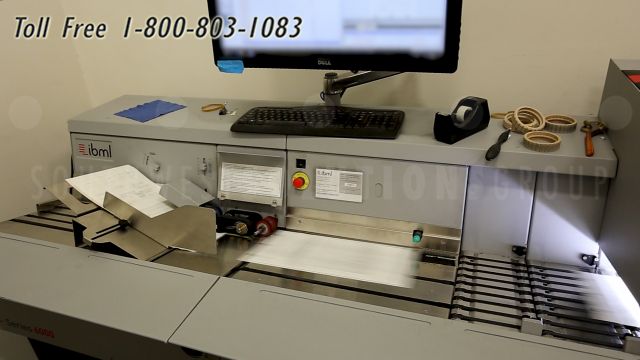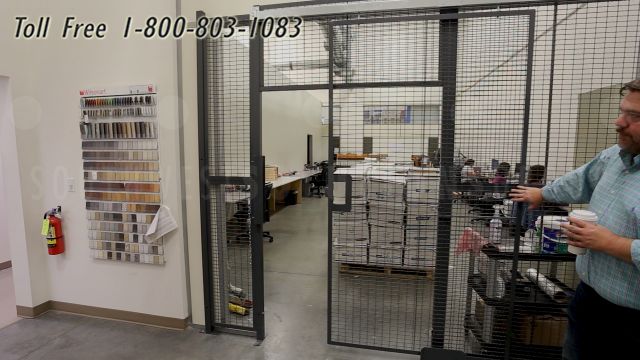Records Digitization
For every business, it is essential to keep meticulous records. Of course, documents take up valuable space – especially large-format drawings. While document storage solutions can minimize the physical space required to keep thousands of documents safe and secure, having digital back-ups is equally important.
 The document scanning needs of many organizations are unique. You may be dealing with large-format documents or even documents that may be quite delicate. For an organization looking to digitize its legacy documents and engineering data from years past, such a scanning project could require quite a bit of human resources and the use of specialized large-format scanners.
The document scanning needs of many organizations are unique. You may be dealing with large-format documents or even documents that may be quite delicate. For an organization looking to digitize its legacy documents and engineering data from years past, such a scanning project could require quite a bit of human resources and the use of specialized large-format scanners.
However, preserving your organization’s documents in a digital format yields many benefits. It can free up physical storage space if hard copies of documents are no longer needed. This can generate immediate savings for document storage fees or allow you to reclaim valuable space in your own office. Digital scanning also allows for fast retrieval and transmission of files to clients, government offices, or other businesses.
Document Scanning
As many businesses in today’s world move towards becoming paperless, many organizations remain paper-heavy. However, that is starting to change as many organizations migrate to digital document management, especially for administrative documents.
- Governmental agencies, such as District and County clerks
- Doctor’s Offices and Healthcare Facilities
- Energy companies
- Police Departments
- Banks and other Financial Institutions
- Professional Sports Teams
- Greek-letter Organizations
As life transitions to a more paperless future, many organizations still need to convert volumes of paper documents into digital images.
Every organization should have a clear records retention policy that should determine which types of records to retain and for how long. The policy should be written and updated regularly. This policy will help you determine which records need to be scanned for posterity and which documents can be sent off for shredding.
Having a policy and process for categorizing records will help streamline the document scanning process and reduce costs. This is true whether you are scanning a backlog of historical files or implementing a plan for scanning and digitizing documents on an ongoing basis.
The Benefits of Document Scanning
One of the primary benefits of document scanning is to your firm’s bottom line. Whether you store the bulk of your files at a secure document storage facility or keep them on your premises, there is a financial cost incurred. Filing cabinets taking up room at your own office take up square footage that could be used more efficiently, and off-site storage quickly becomes costly.
Then there are the productivity costs associated with time spent locating and physically retrieving records. For example, one study found that average small to medium-sized businesses in the UK spent the equivalent of $70 million per day locating paper documents alone. Digital files, on the other hand, can be located and transmitted in virtually no time at all.
Another benefit to document scanning is protecting your data from natural disasters. Even secure document storage facilities are vulnerable to earthquakes, floods, and fires. Look no further than the 2008 Universal fire that led to the destruction of thousands of original master recordings by artists such as Muddy Waters, Etta James, Buddy Holly, Guns N’ Roses, Queen Latifah, Eminem, and countless others. Anything can happen, and having digital copies of your firm’s most important documents is crucial.
Scanning Services

Whether you have a single banker’s box of documents or a room full of them, you’ll want to work with a document scanning firm. Such companies are typically more cost-efficient than buying equipment and training staff to conduct in-house scanning.
Preparing Your Documents
You can expect to work with a Project Manager that will help you evaluate the scope of your scanning project. This includes identifying items such as the best data capture option and preferred file formats for your digital images.
Remember to purge any documents that you do not need to keep according to your records retention policy. At this point, your documents should be boxed and labeled.
Scanning Your Documents

Document Delivery
Once your documents are scanned, you can expect to receive them in one of two ways. You can have your files uploaded to your company’s Application Service Provider (ASP) or placed on a hard drive that is delivered to you.
Your original documents can then be stored, returned, or destroyed as you require.
File Formats
The standard upload format for scanned documents is PDF. This file format is preferred by most companies as it allows for optical character recognition (OCR). This makes the text of your files searchable, so you can instantaneously find a document related to a specific construction project or client.
However, PDF might not be the best option for some of your documents. When it comes to images like blueprints, maps, renderings, and mechanical diagrams – anything that would require large format scanning – the TIFF file format may be more appropriate. TIFFs are image files that use a lossless compression algorithm to retain a high level of quality. Because of their high quality, TIFFs are ideal source files for printing documents should you need to reproduce them in the future.
Large-Format Scanning
Many businesses require large-format scanning services.
What is considered a large format? Anything larger than an 8.5″ x 11″ is a large-format document. In the United States, paper sizes are classified by the American National Standards Institute. ANSI A is used to describe your standard letter size document mentioned above.
Anything larger than that is considered a large format, which ranges from ANSI B (11″ x 17″) up to ANSI E (34″ by 44″). Our large-format scanners can accommodate documents measuring up to 36″ wide by 60″ long.
Large format scans can be created in black and white, grayscale, or color. The standard resolution is 300 DPI, but higher resolutions are available. With large format documents, you’ll likely want the final files delivered in TIFF form. While this format lacks the benefit of OCR, you can still add metadata to index each file by client name, project type, designer, etc.
Preserving Your Legacy

For example, future archivists and curators of architectural history may come to rely on the carefully preserved plans of architects and designers to research your contributions. Scanning the critical files that document the evolution of every project from conception to completion ensures that your firm’s legacy is secured even if the original paper documents have been lost.
Selecting a Document Scanning Provider
A document scanning project may seem daunting. But with the right partner to guide you through the process, digitizing your records is well worth the effort. Aside from the cost and space-saving benefits, scanning documents will allow you to have years of your firm’s output at your fingertips at a moment’s notice. It will also provide peace of mind that your company’s legacy is secure should anything happen to paper originals.
Document Scanning Solutions for Regulated Industries
If you’re in a regulated industry, your scanning may require special care. In healthcare, for example, you’ll need to make sure you are following HIPAA regulations. Southwest Solutions is HIPAA-compliant for healthcare scanning needs. Similar regulations impact document scanning for the energy industry and pipeline equipment files and many governmental agencies, such as Criminal Justice Information Service (CJIS) regulations.
If you’re a business that’s going through a Merger, Acquisition, Divestiture, or relocation, you’ll likely need to create a digital databank for due diligence and transition. Doing this in-house can be exceptionally labor-intensive.
Contact Us for Document Scanning
Southwest Solutions Group® provides your document scanning project with our state-of-the-art scanning equipment, ironclad security, quality control, and more than 50 years of document handling experience. Our large-format scanning capabilities mean we can meet the specialized needs of your organization. Our team is prepared to handle any job you may have, no matter how big or small. To learn more about the many ways we can improve your document handling practices in a free consultation, call us at 1-800-803-1083 or send us a message today. We will even scan a box of your records for free so you can be sure our services are the right fit for you.

 Document Scanning Services
Document Scanning Services
 Virtual Labels: Info Management
Virtual Labels: Info Management

